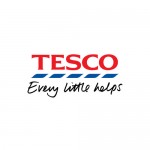
Tesco CSR programs and initiatives are developed and implemented by Corporate Responsibility Committee led by Chairman John Allan. The importance of CSR for Tesco maybe greater nowadays than ever before due to a series of ethics-related scandals the supermarket chain had to deal with recently such as inappropriate profit reporting and poor supplier treatment cases. In other words, it is important for the supermarket chain to restore the trust of its towards the brand and engagement in CSR programs and initiatives is an effective tool to achieve this objective. The company releases Corporate Responsibility Update regularly and it includes the details of CSR programs and initiatives engaged by the company. The table below illustrates the highlights from the latest report for the financial year of 2014/15: Categories of CSR activities Tesco Performance Supporting local communities The company donated GBP 55 million, which accounts to 3.96 per cent of its pre-tax profit to various charities and good causesIn total, GBP 37.9 million has been raised from Tesco employees and via customer fundraising Educating and empowering workers 70% of employees stated they would recommend Tesco as a great place to workAs much as 77 per cent of managers, directors and business leaders within the company made career progresses Labor and human rights The supermarket chain declares its commitment to UN Universal Declaration of Human Rights and the International Labour Organization Core ConventionsIn 2010, Tesco’s USA stores, Fresh & Easy was accused by Human Rights Watch for allegedly exploiting weak labour laws in the US and bullying employees to prevent them from joining unions[1] Employee health and safety In 2015 a total of 1539 employees in retail and distribution were injured at work that resulted in fractures or lost time of more than three days Gender equality and minorities The percentage gap in payment…

Tesco McKinsey 7S model illustrates the linkage between seven separate elements of the business to increase the overall effectiveness. According to this model, businesses have hard and soft elements and shared values as soft element are the result of interaction of all elements with direct and huge effects on employee behavior and performance. Tesco McKinsey 7S Framework Hard Elements Strategy. Tesco pursues cost leadership business strategy according to its marketing communication message Every Little Helps. The supermarket chain has been able to sustain this strategy due to the extensive exploitation of the economies of scale and the exercise of bargaining power in dealing with suppliers to secure low purchasing costs. Currently, Tesco is dealing with a set of complex challenges such as restoring customer trust following profit accounts scandal, supplier payment delays scandal and dramatic decline of sales as a result of these incidents. Tesco strategy to deal with these issues as announced by its new CEO Dave Lewis include the reduction of capital expenditure to GBP 1 billion, replacement of the benefit pension scheme for all employees and the review of property portfolio with the aim of cost reduction. Moreover, a focus on availability, service and selectively on price emerged as a strategic priority for the new management. Structure. Tesco’s organizational structure is highly hierarchical and comprises many layers of management from store sales assistant to the CEO. The new CEO Dave Lewis eliminated the roles of deputy store managers in 2015 as part of attempts to simplify the organizational structure. There are 10 members in The Board of Directors and the company’s Executive Committee comprises 11 members. Systems. The supermarket chain relies on a wide range of systems on a daily basis to sustain its operations. New management led by CEO Dave Lewis announced plans to simplify organizational…

Value chain analysis is an analytical framework that assists in identifying business activities that can create value and competitive advantage to the business. The figure below illustrates the essence of value chain analysis. Tesco value chain analysis Primary Activities Inbound logistics Tesco inbound logistics operations are complex and involve the supply of hundreds of product categories to 7817 Tesco stores around the world[1]. Economies of scale due to the large scope of its operations is a major source of value creation for Tesco. The company makes regular investments to increase the capacity of logistics so that the economies of scales can be exploited to a greater extent. For example, in 2013 as a part of a government-backed trial program testing the efficacy of longer trailers, Tesco received 25 new 51-foot Gray & Adams refrigerated units. New trailers can carry 51 cages (UK shipping units), six more than a standard 45-foot trailer. This change resulted in 13 per cent increase in logistics productivity[2]. The company has a history of poor supplier treatment under the previous leadership that involved the cases of payment delays to improve Tesco’s operational profit margins[3] and unnecessary and unjustified fines being imposed to suppliers[4] with negative implications on various aspects of supply chain practices. However, the new management led by new CEO Dave Lewis announced its commitment to form strategic relationships with suppliers. Operations Tesco operations can be divided into three large segments: 1. Retail. This segment represents the core business of Tesco PLC. With more than 80 million shopping trips made thousands of Tesco shops in 11 countries around the world[5], the scope of Tesco’s retail operations is extensive. The company operates stores in the following format: Metro. Metro stores sell wide range of food and a smaller selection of general items such as cook ware…
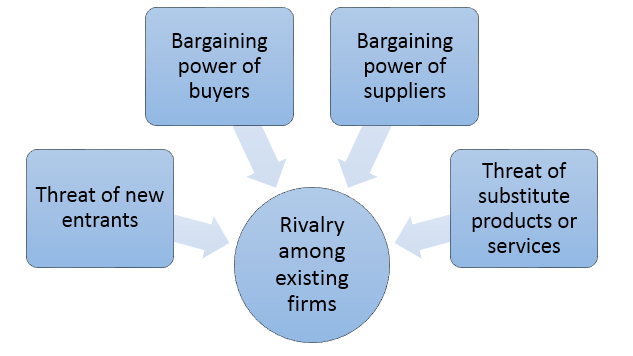
Tesco Porter’s five forces attempts to analyze five separate forces that determine the extent of overall competition in the grocery retail industry. These forces are represented in Figure 1 below: Figure 1 Tesco Porter’s Five Forces Threat of substitute products or services for Tesco is irrelevant. Tesco sells a wide range of products belonging to the following categories: Clothing & jewelry Technology & gaming Health & beauty Home electrical Entertainment & books Home appliances Baby & toddler Garden Toys DIY & Car The range of products sold by Tesco is highly comprehensive. The supermarket chain sells a wide range of products, as well as, substitutes of the majority of these products. Therefore, it can be argued that the threat of substitute products and services for Tesco is irrelevant. Rivalry among existing firms in supermarket chain sector is fierce. The amount of advertising expenditure and the extent of differentiation of products and services are major factors impacting the competitiveness of companies operating in food and grocery retail industry. There are no switching costs for consumers and this fact also increases the intensity of competition in the industry. As it is illustrated in Figure 2 below, although there are many major market players in the grocery retail industry in the UK, Tesco maintains a clear leadership position despite challenges the company currently faces. Figure 2 Market share of grocery retail chains in the UK from January 2015 to April 2016[1] Bargaining power of Tesco suppliers is low. Tesco has hundreds of suppliers and there is a minimum or no supplier switching cost for the supermarket chain. The company has the history of using its barraging power to delay payment to suppliers in order to improve its operational profit margins under the previous leadership in 2014.[2] After this and other incidents of poor…
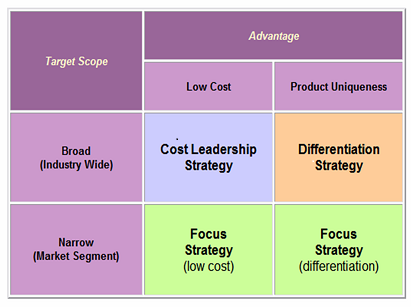
Executive Summary This article represents a business plan sample for Product Placement Opportunities®, a marketing services company that provides a platform for medium sized businesses to engage in product placement in a cost-effective manner through its website www.pp-opportunities.com. The business plan sample is built upon the gap in the in the marketing services industry that relates to allowing media, special event and computer games businesses to utilise their product placement opportunities in a direct manner, without using the services of marketing agencies. The comprehensiveness of the business plan sample is ensured by explaining mission statement, business strategy and objectives in a detailed manner. The main source of revenue for Product Placement Opportunities® relates to charging media, special event and computer games and other businesses for adverting their product placement opportunities on www.pp-opportunities.com. Price skimming pricing strategy has been chosen as the most suitable for the business. Analysis of principal personnel qualifications and experience contained within the plan highlights the ways in which competitive advantages are going to be derived. Moreover, cash flow forecast, profit and loss accounts forecast and balance sheet associated with the business plan have been developed on the basis of situational analysis and analysing market size for Product Placement Opportunities® services. The business plan sample also contains discussion related to relevant legal requirements, such as the company’s legal structure, commercial dealings, insurance and others. Glossary of Terms Business plan – “a document that sets out the basic idea underlying a business and related startup considerations” (Longenecker et al, 2005, p.117) Product placement – “an advertising technique used by companies to subtly promote their products through a non-traditional advertising technique, usually through appearances in film, television, or other media” (Business Dictionary, 2016, online) Organisational mission – “organisation’s fundamental purpose for existing, defining who the organisation is, its values, and the…
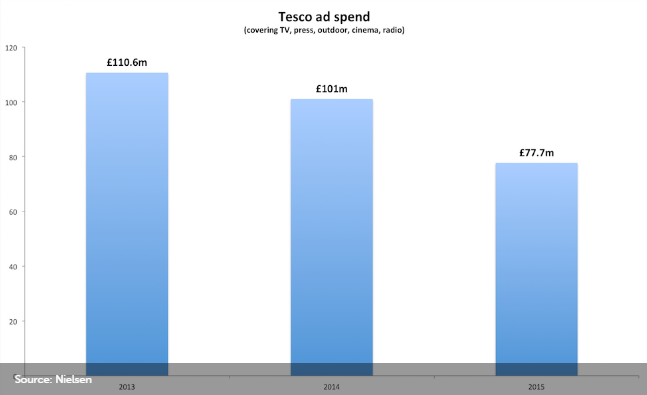
Currently, Tesco marketing strategy aims to regain the trust of stakeholders to the brand. The company is refocusing on “Every Little Helps” strapline to strengthen its core traditional competitive advantage in the marketplace. Certain elements of the marketing communication mix such as print and media advertising, sales promotions, events and experiences and public relations are used by the retail chain to communicate this message to customers. Advertising Tesco marketing strategy makes an extensive use of print and media advertising systematically as a tested channel to send marketing communicate message to current and potential consumers. It is important to note that although Tesco has decreased its advertising budget in 2015 compared to previous years as a part of its massive cost-saving initiatives (see figure below), the efficiency of its print and media advertising has increased. This has been achieved via application of marketing differentiation. For example, during Christmas period, the retail chain eschewed an emotional campaign for humour using the family of characters, played by Ruth Jones and Ben Miller, it had introduced earlier in the year.[1] Changes in Tesco advertising budget Occasionally, Tesco print and media advertising contains valuable advises on cooking or home styling. For example, company recently “released reactive print ads around the Great British Bake Off, with a “bake it or fake it” theme. One page shows what ingredients someone can buy to make the creations shown on TV, the other page shows what they can buy instead.”[2] Sales Promotion Various forms of sales promotions play an integral role within Tesco marketing strategy. The supermarket chain facilitates sales promotions in the following formats: Clubcard. Customers collect 1 point for each GBP 1 spent in Tesco. Several times a year customers receive statements and and vouchers equal to the value of points they have saved. Free gifts. The supermarket chain offers free…
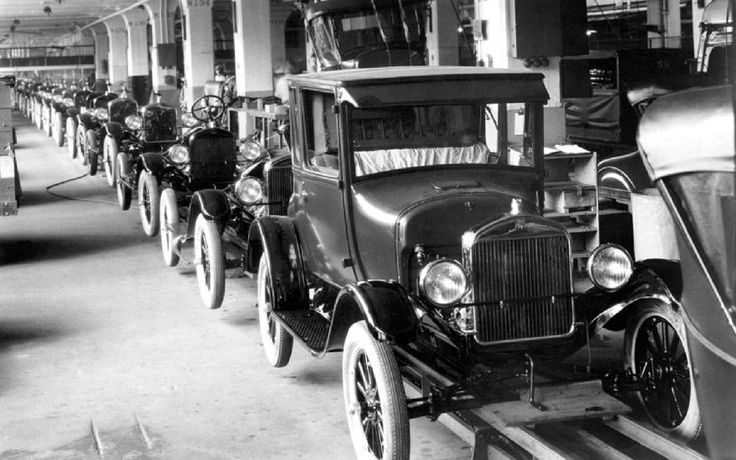
1. Introduction Fordism can be defined as “a set of principles that includes technological measures, especially mass production on the assembly line, as well as economic strategies such as supporting mass consumption by lowering prices and increasing wages”[1]. The term is coined by Antonio Gramsci after the name of Henri Ford, a famous US industrialist and the founder of Ford Motor Company. The concept of Fordism has developed starting from 1910’s to reach its peak in the period between 1940’s to 1960’s. Fordism is closely associated with the notions of mass production and consumption. Prior to mass production assembly lines introduced initially in Ford factories, products were manufactured with the method of craft production, which involved the same workers being engaged in the many stages of manufacturing processes. The consumption point of Fordism stems from Henri Ford’s belief that company employees need to be able to purchase cars produced by Ford, thus the level of their wages were increased. Thus, it can be reasoned that “Model T, sold in millions, can be viewed as the herald of consumerism, the new phase in human history when consumption came to be seen no just as the means of survival but as the true path to the good and happy life”[2]. This article represents a critical evaluation of the concept of ‘Fordism’ within the settings of international political economy a range of related issues. The article starts with discussions about the evolution of Fordism. This is followed by critical assessment of the concept within modern international political economy. Moreover, the article contains a reflection of criticism associated with Fordism and analysis of circumstances that enabled emergence of Neo-Fordism. 2. Evolution of Fordism It has been argued that Fordist method of mass production primarily owes to the teachings of Taylorism, which has created…
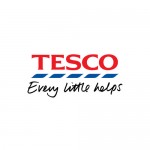
PESTEL is a strategic analytical tool used to evaluate external environment for the business. Specifically, Tesco PESTEL analysis involves an evaluation of political, economic, social, technological, environmental and legal factors affecting the retail chain. Political Factors A range of political factors can affect Tesco in direct and indirect ways. The list of political factors that may affect Tesco include but not limited to political stability in the UK and abroad, bureaucracy and the extent of corruption in Tesco’s home market in international markets. Moreover, activities of trade unions and home market lobbying initiatives in international markets are important political factors that affect the retail chain. Tesco’s new Chairman, John Allan has proved himself as an outspoken business leader to express his views about impacts of political factors on the business. For example he has stated that “the prospect of an EU referendum is causing uncertainty for investors, and this represents a “heavy pebble” placed in the scales of the British economy”[1]. Certain political factors can potentially have negative implications on Tesco’s bottom line. For example, in 2014 a group of local councils in the UK formally asked the government to for new powers to tax large supermarkets, an initiative that became known as ‘Tesco Tax’.[2] Although, this specific initiative was refused by the UK government to avoid price increases, similar political initiatives may succeed in the future with negative implications for Tesco. Economic Factors Various macroeconomic factors affect Tesco to a great extent. The cost of labor is one of the major economic factors greatly impacting the revenues of the supermarket chain. The company’s annual wage bill accounts to GBP 4.5 billion. Accordingly, increase of 1 per cent in the cost of labor costs the company about GBP 45 million. An increase of the national minimum wage to GBP 7.20…
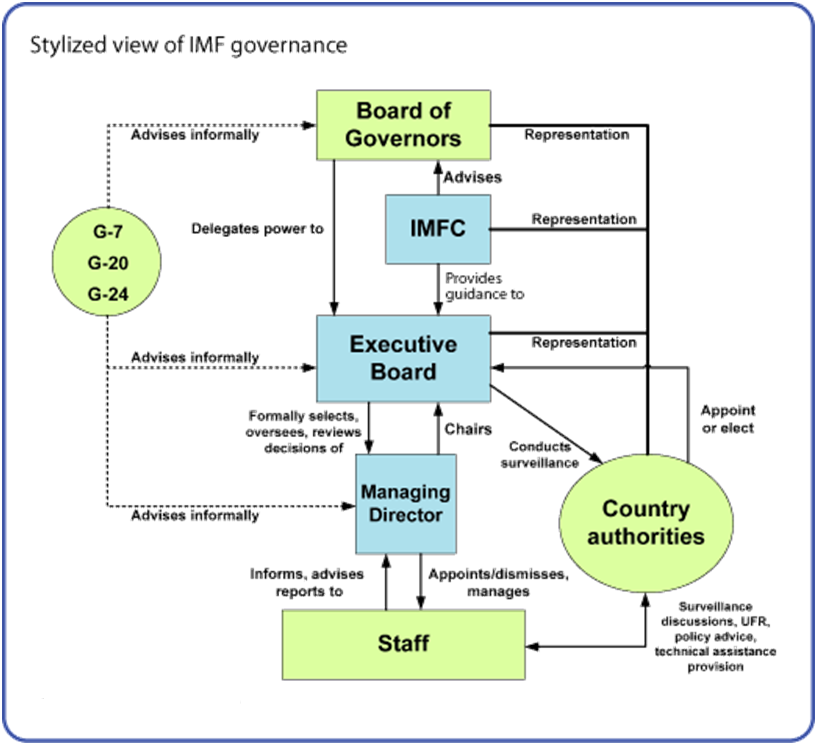
Abstract The International Monetary Fund (IMF) as one of the leading global financial organisations that deals with the issues of securing financial stability, facilitation of international trade, promoting economic growth in a sustainable manner, and poverty reduction in a global scale. There are mixed opinions about the role and performance of organisation in dealing with these issues. Some people perceive IMF to be an important organisation making valuable contribution to macroeconomic stability, whereas others blame the organisation for financial problems within specific countries and areas. Nevertheless, nowadays IMF has to deal with a set of complex challenges in local and global scales. This paper attempts to critically evaluate a set of issues directly related to IMF performance. The paper has identified major challenges faced by IMF to include its governance structure, increasing level of politicisation, leadership challenges, performance evaluation difficulties, and dealing with social instability. займы срочные в день обращения Moreover, necessary changes have been proposed for IMF that should assist in dealing with the challenges the organisation is facing. These changes include reforming IMF governance, gaining focus on role and objectives, developing performance accountability frameworks, improving lending policy, and increasing the level of comprehensiveness in country analysis. 1. Introduction The International Monetary Fund (IMF) is “an organization of 188 countries, working to foster global monetary cooperation, secure financial stability, facilitate international trade, promote high employment and sustainable economic growth, and reduce poverty around the world” (About IMF, 2016). IMF was set up during Bretton Woods Agreements in 1944 with only 44 countries and it is governed by a Managing Director and Chairman of the Executive Board, currently Christine Lagarde, who is assisted by the First Deputy and three other Deputy Managing Directors. The Articles of Agreement of IMF state that the Managing Director “shall be chief of the operating…

Tesco Board of Directors comprises 10 members and there were significant changes in the Board during the financial year 2014/15. These changes include the appointment of John Allan as the Chairman of the Board, the appointment of a new CEO Dave Lewis and new Chief Financial Officer Alan Steward, the retirement of four Non-Executive Directors and the appointment of three new Non-Executive Directors. In 2015, Mr. Lewis announced the reduction of costs across head office functions by 30 per cent with direct implications on the management structure. As it is illustrated in Figure 1 below, Tesco governance structure comprises five committees reporting to Tesco PLC board. There are 11 members in Tesco Executive Committee led by Group Chief Executive Dave Lewis. Figure 1 Tesco Corporate Governance Structure Tesco organizational structure is highly hierarchical reflecting the large size of the business. Even in store level, there are as many as four layers of management in some large stores. The Figure 2 below illustrates a typical organizational structure within Metro, Superstore and Extra formats. It is important to note that the structure below is not rigid for all Tesco stores and some stores operate with a slightly different structure reflecting their location, size and a range of other store-specific factors. Figure 2 Tesco organizational structure at store level It can be argued that three or four management layers within a single store may create unnecessary bureaucracy with a negative implications on the flow of information across the management layers. Therefore, the senior level management needs to consider delayering opportunities i.e. increasing the flexibility of operations and changes within store and accelerating the flow of information via reducing the layers of management. Tesco PLC Report comprises a comprehensive analysis of Tesco. The report illustrates the application of the major analytical strategic frameworks in…
